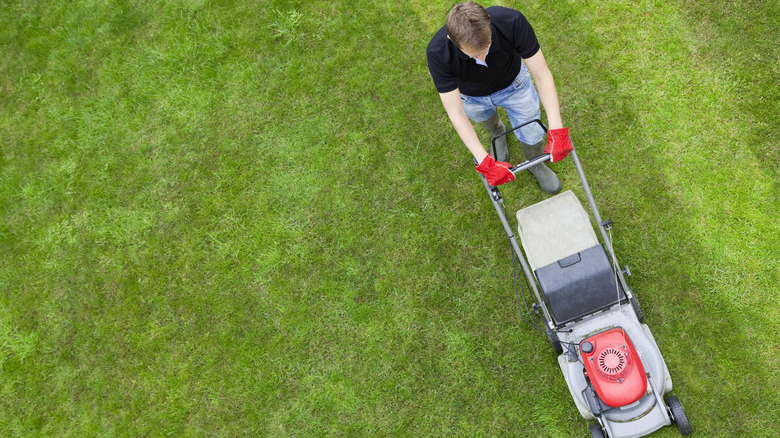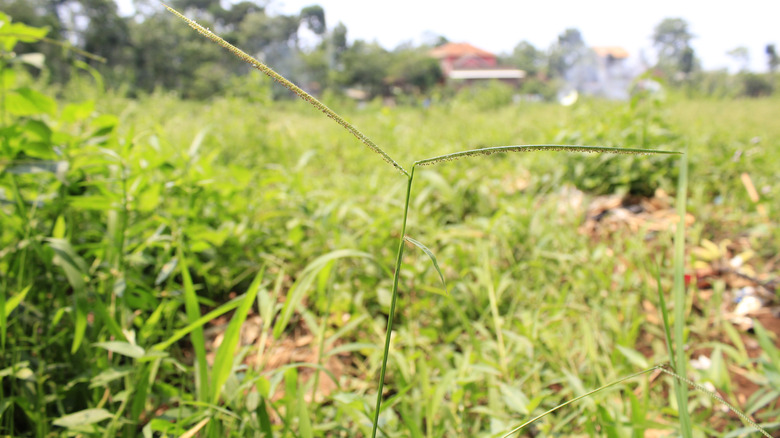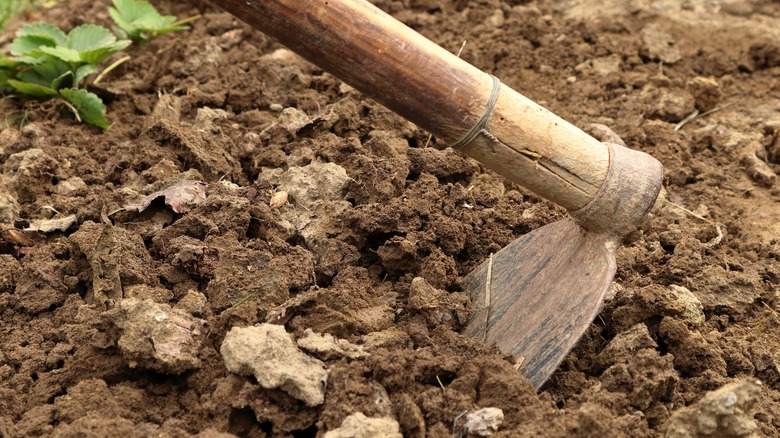The Weedy Grass Look-Alike You Don't Want To Find Growing In Your Lawn
You don't have to be a garden expert to know that a healthy lawn doesn't just add to the beauty of your garden. It has many other benefits, like enhancing your soil, boosting water retention, and preventing soil erosion. Not to mention the fact that a luscious lawn can increase the value of your home. Many of the ways to keep your lawn green take valuable time and money, so the last thing you want is an invasion of ugly weeds pushing through your grass and threatening to take over.
Invasive weeds can quickly take root in lawns that are not properly cared for, and once established, can be difficult to eliminate. One common threat is knotgrass. If you think that this is a harmless, puny weed, think again. Knotgrass (Paspalum distichum) is a hardy, invasive plant that can be found in the southern half of the United States. If you don't get it quickly under control, it will take over your lawn by creating dense mats that choke out your grass, killing it and preventing it from regrowing. Learning to recognize knotgrass is the first step to preventing it from becoming a serious problem.
What to look out for when identifying knotgrass
You'll recognize knotgrass by its green, slender, pointed leaves growing parallel to the stem. In July and August, you'll start to notice tiny, greenish-white flowers that bloom in the spaces between the leaves. Though the weeds may start out small, they grow rapidly, their stems elongating and producing thick clumps of foliage. These mats can grow stems between 6 and 72 inches long and have roots that enable the weed to creep along the ground, quickly forming large patches.
Knotgrass is a perennial weed, which means if it is left unattended, it can grow back each year. It spreads by means of horizontal underground stems that develop roots, so it can quickly gain a firm hold of any garden area. Lawn varieties that have a high-turf density, such as zoysiagrass and hybrid Bermuda grass, may be able to put up a better fight against knotgrass than other varieties, but in the end, if it's not removed properly, this weed could eventually get the upper hand.
How to kill knotgrass weeds
You need to rid your lawn of knotgrass as soon as you see it in or around your grass. If you prefer to adopt organic lawn care methods, the best way to get rid of knotgrass is to hoe it out. Knotweed roots grow to a depth of around 1 ¼ inches, so you will need to dig at least to that depth. Digging beneath the soil under the base of the stem will ensure that it won't grow back. If hoeing is your preferred method, make sure you don't leave any roots behind or the plant may reestablish itself. If the plant has flowered, then it has most likely already reseeded.
One of the main reasons that knotgrass is so difficult to control is that even in small pieces, the creeping stems can regrow if they are left in the soil, so you'll need to be vigilant and pull out the whole plant or go back for a second weeding. For larger patches of knotgrass, you may want to paint a glyphosate herbicide on the leaves. If you have bare patches in your grass from removing knotgrass, you can utilize the overseeding technique to build up the density of your lawn. Before you know it, there will be no sign that you ever had knotgrass in your garden.


